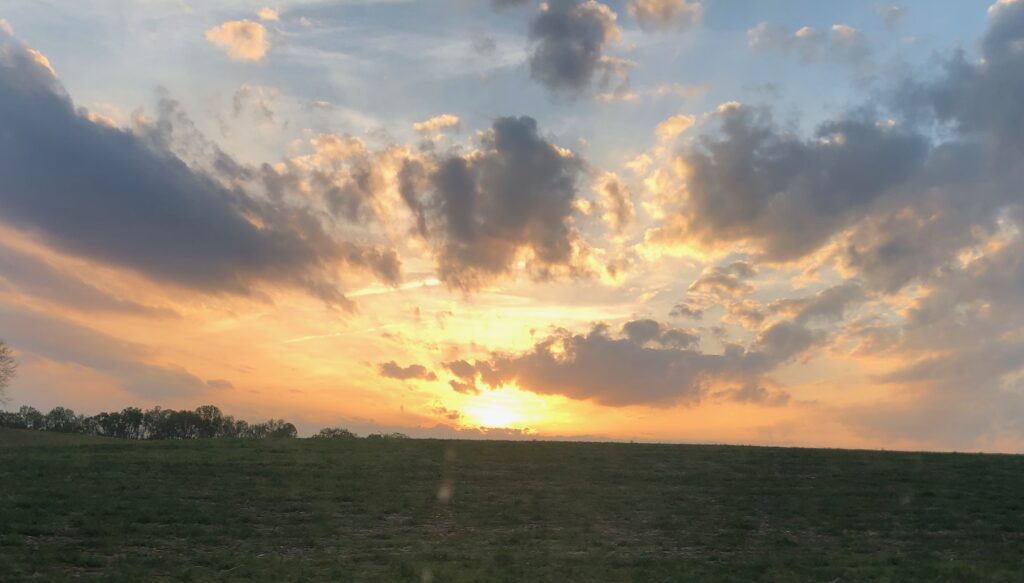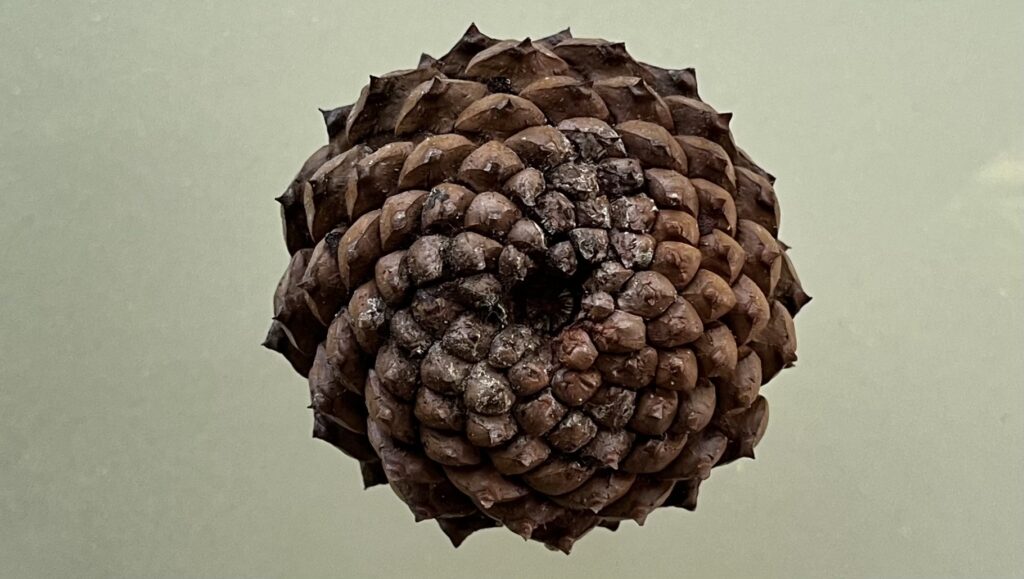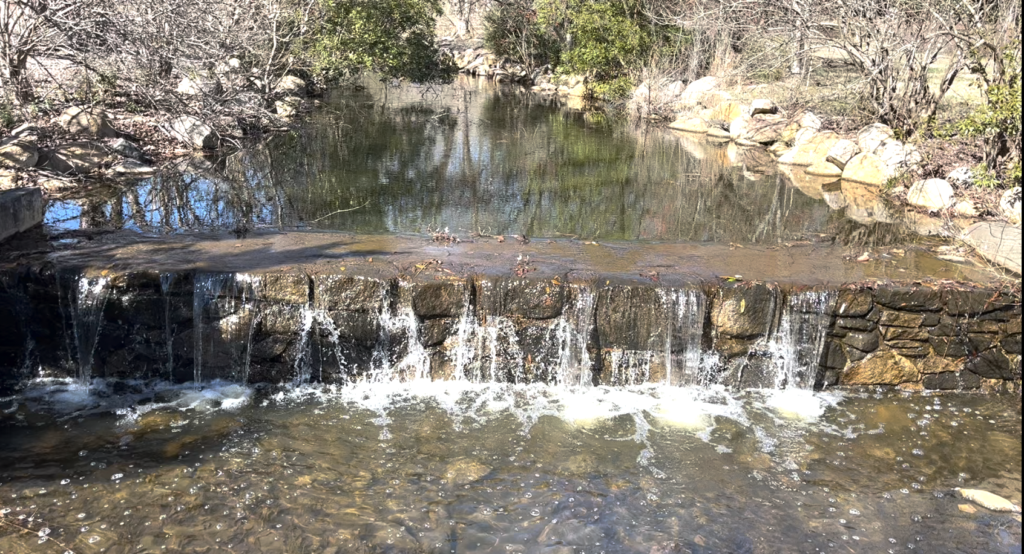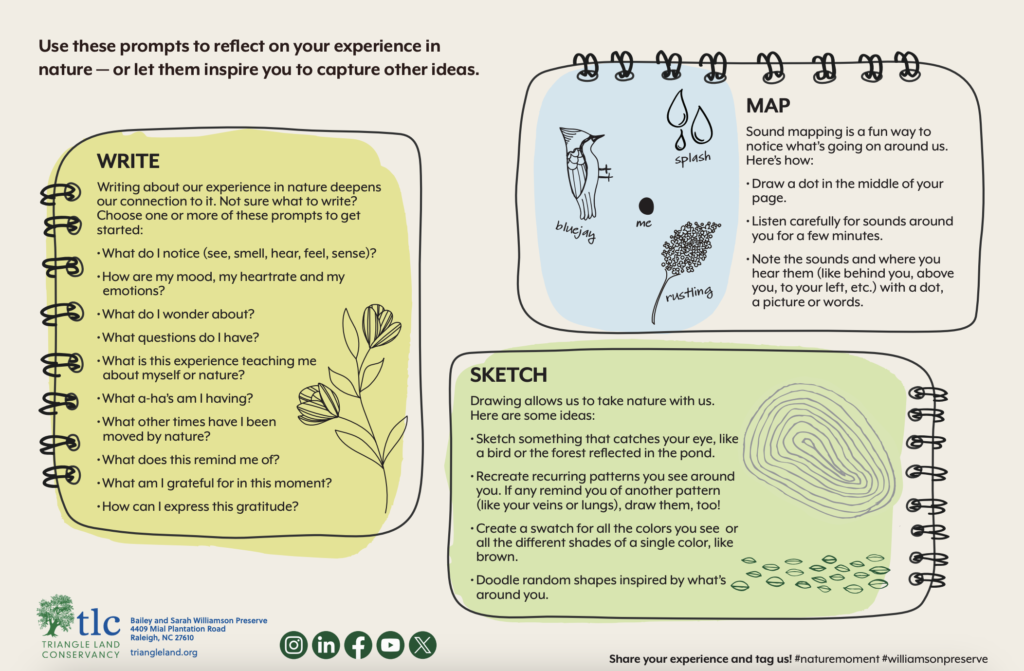
Sunset in Dodson’s Crossroads
Note: This is the second in an intermittent series we’re calling Interstitial, shorter periodic missives between our longer columns. Read the previous one here.
“Adopt the pace of nature; her secret is patience.”
Ralph Waldo Emerson
Busy. Busy. Busy. The transition into spring can be exhausting. Follow Emerson’s advice!
To help you do that, Margot’s sharing some of her favorite nature connection activities.
Interstitial #2 – Connection
With the rush of spring tasks and activities—and all the other stuff that’s going on—one of the best things we can do is to ease up a little and spend some time outside. Especially now that the pollen has abated. Research shows that just looking at nature, much less getting out in it, has physiological effects that reduce stress and increase feelings of happiness. In other words, getting outside is good for you.
For more on how nature influences your health, read Your Brain on Nature by Eva M. Selhub and Alan C. Logan.
4 ways to slow down with nature
The best part of this is you don’t have to do anything. Just showing up has benefits. If you want to get a little more from the experience, here are some things to try:
- Focus. Look at the canopy or at the ground. Notice recurring patterns (fractals) and interesting shapes and when you find one that intrigues you, hold it in your gaze for a few minutes. See if your breathing changes, heart rate slows or your mood improves. If you have a nature ID app on your phone (I like iNaturalist), upload some pictures to identify the things that caught your eye.

With their scales arranged in a recurring pattern, pinecones are one of the most common plant fractals
- Breathe. Take a deep breath, hold it a beat, and then exhale slowly to relax. Now take a second breath. What do you smell? Take another and try to notice the elements that make up the smell—like dirt, leaf litter, evergreen, wet dog. Take one more deep breath. How do you feel physically and emotionally in this place?
- Listen. Stand or sit and close your eyes if you want to. Tune your ears to sounds that surround you — up, down, front, back, left, right. Listen to sounds that are nearby and far off—like a babbling brook, wind in the canopy, chirpy avian pals. Try not to get mad if you hear human-made sounds like leaf blowers or chitchat. Acknowledge them and then re-tune to something more pleasing. If you have a bird ID app on your phone (I like Merlin), see how many species are hanging out with you.

The brook at Fearrington Village’s Camden Park makes a pretty sound as it cascades over a little dam.
- Appreciate. Think about one reason you’re grateful for our planet. It could be this exact spot, somewhere else, that cool beetle trundling through the leaf litter, or a wispy cloud scudding across the sky. Anything.
More ways to connect with nature
Want something more intentional and active? I developed a set of activities for the Triangle Land Conservancy that you can download or screenshot to take to your backyard or favorite nature spot away from home.
You can keep the nature connection going with community science projects, too:
- The Redbud Phenology Project, which I mentioned in our March column
- The Community Collaborative Rain, Hail & Snow Network, an all-ages project that uses inexpensive rain gauges to measure and map precipitation.
Looking for a good read instead? I’ve got a list of my favorite nature, science and climate books going. Remember to buy responsibly or borrow from one of our local libraries.
Right. That’s it for me this month. See you in June when Geoffrey will introduce you to some more Franklin Street trees.
All photos by Margot Lester
Geoffrey Neal is the director of the Cullowhee Native Plant Conference. You can see more of his photography at @soapyair and @gffry. Margot Lester is a certified interpretive naturalist and a writer and editor at The Word Factory.

About the name: A refugium (ri-fyü-jē-em) is a safe space, a place to shelter, and – more formally – an area in which a population of organisms can survive through a period of unfavorable conditions or crisis. We intend this column to inspire you to seek inspiration and refuge in nature, particularly at the Arboretum!

